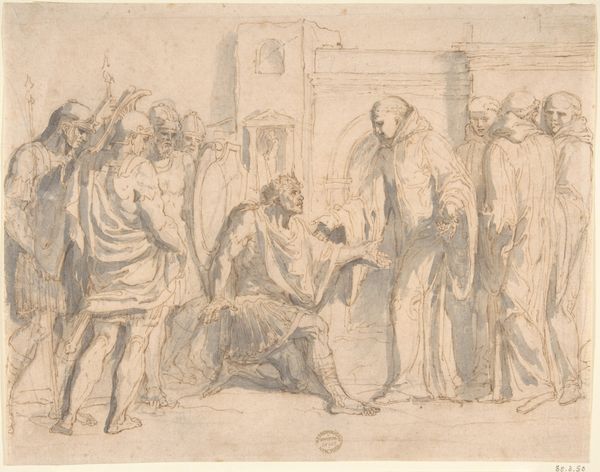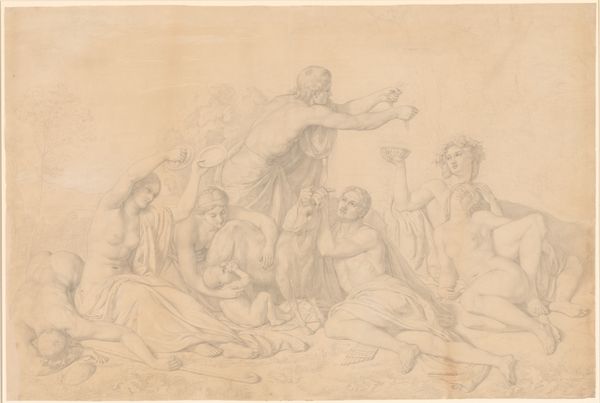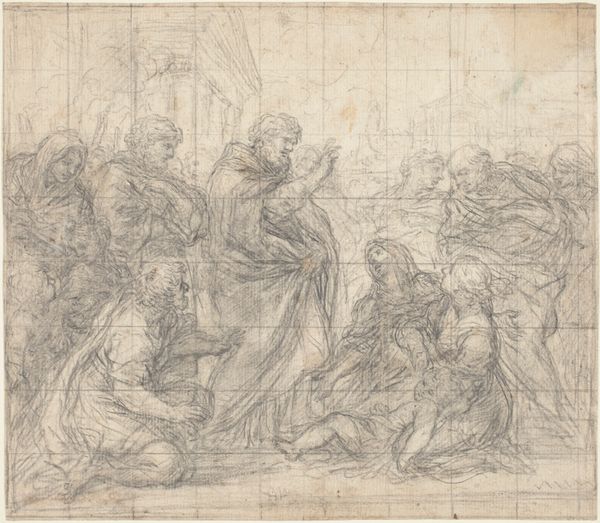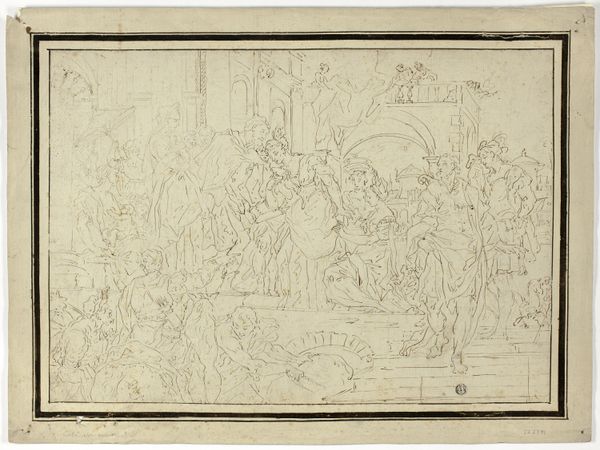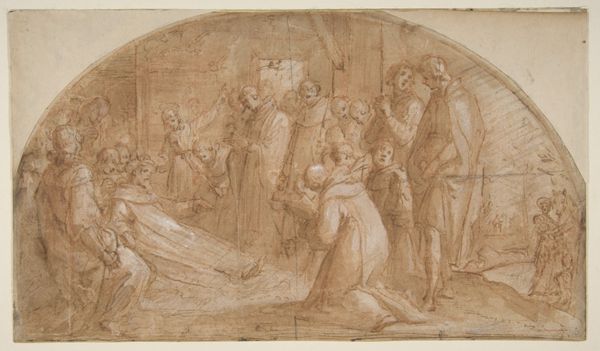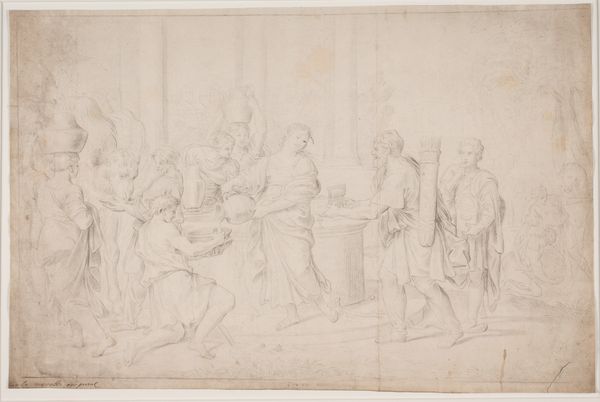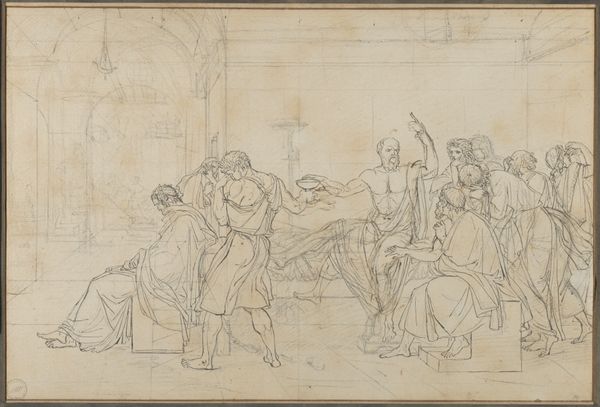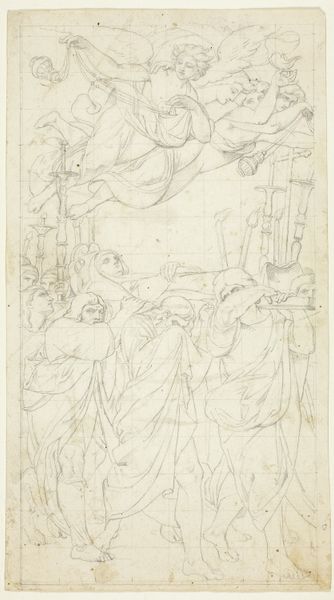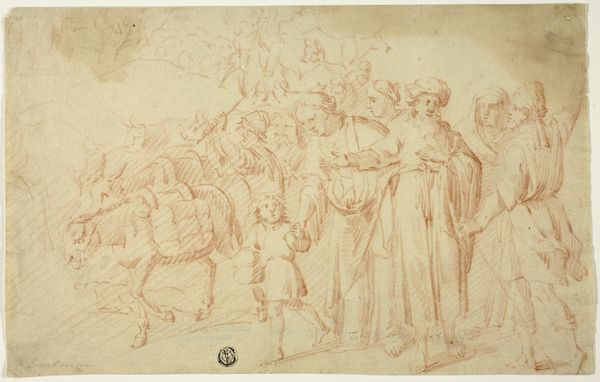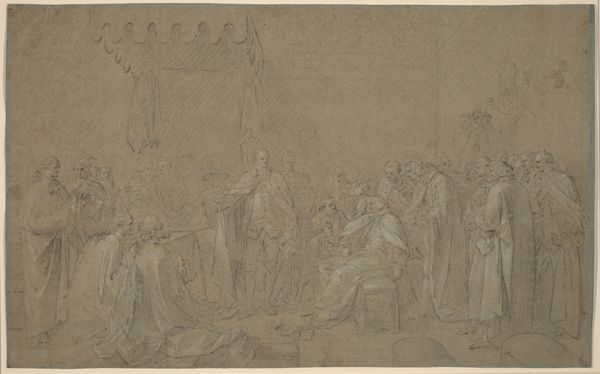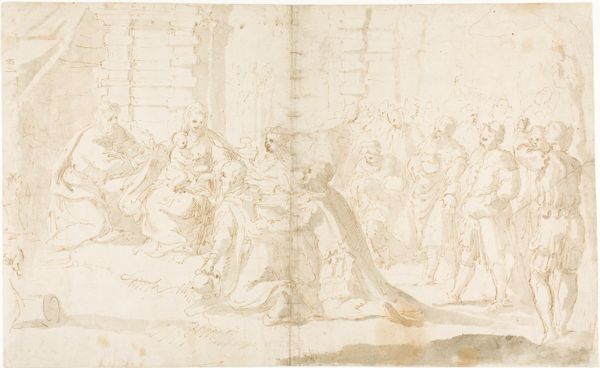
drawing, pencil
#
drawing
#
allegory
#
figuration
#
pencil
#
history-painting
#
academic-art
Dimensions: 157 mm (height) x 217 mm (width) (bladmaal)
Curator: Before us is a drawing titled "Le sort des artistes", or "The fate of the artists", created in 1786 by J.F. Clemens. It’s currently housed in the SMK, Statens Museum for Kunst. What catches your eye initially? Editor: Well, formally, the composition, though delicate, is quite dense, isn’t it? All these figures crammed together; it creates a sense of restrained tension. And the subdued graphite gives it a certain gravity. Curator: Indeed. It reflects the academic art traditions prevalent then. It’s also an allegory, a popular mode for exploring social commentaries at the time. Clemens uses history-painting conventions here, even if it is a drawing, to present his message on the social role of the artist. Editor: I see that now. The figure sitting down with what seems like uncontrollable hair draws my attention. I'm wondering if the contrast is symbolic for the artist. Curator: It certainly is a depiction that serves that meaning. It appears that they are under the watch of Apollo's cart, who drives the scene by overlooking each individual, maybe indicating the creative individual is in his custody and should live up to a standard in that environment. What the academic artistic establishment asks for... Editor: Right, the academic style reinforces that control and order, versus what may seem wild, out-of-control features in the front. All that precision… the rendering of those classical garments! It feels intentionally rigid. Do you think it reflects the constraints put upon artists by the academy? Curator: Precisely! Clemens hints at a system where an artist's success is reliant upon approval from the traditional establishment. Consider the placement of this figure at the front. How can one flourish without having the approval of the upper level? Editor: Very insightful. The limited tonal range reinforces that restricted feeling too. It’s a very calculated work in that sense. Curator: An open critique of the establishment through art, if I might say. Looking at this piece through today's museum gallery, you can begin to ponder its message toward academia's involvement in art. What do you take away? Editor: I notice the delicate handling of a powerful social commentary on an ongoing battle.
Comments
No comments
Be the first to comment and join the conversation on the ultimate creative platform.
